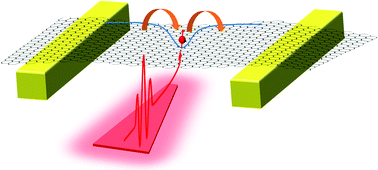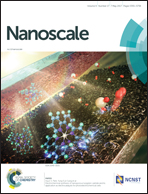Coupling graphene nanomechanical motion to a single-electron transistor†
Abstract
Graphene-based electromechanical resonators have attracted great interest recently because of the outstanding mechanical and electrical properties of graphene and their various applications. However, the coupling between mechanical motion and charge transport has not been explored in graphene. Herein, we studied the mechanical properties of a suspended 50 nm wide graphene nanoribbon, which also acts as a single-electron transistor (SET) at low temperatures. Using the SET as a sensitive detector, we found that the resonance frequency could be tuned from 82 MHz to 100 MHz and the quality factor exceeded 30 000. The strong charge-mechanical coupling was demonstrated by observing the SET induced ∼140 kHz resonance frequency shifts and mechanical damping. We also found that the SET can enhance the nonlinearity of the resonator. Our SET-coupled graphene mechanical resonator could approach an ultra-sensitive mass resolution of ∼0.55 × 10−21 g and a force sensitivity of ∼1.9 × 10−19 N (Hz)−1/2, and can be further improved. These properties indicate that our device is a good platform for both fundamental physical studies and potential applications.



 Please wait while we load your content...
Please wait while we load your content...